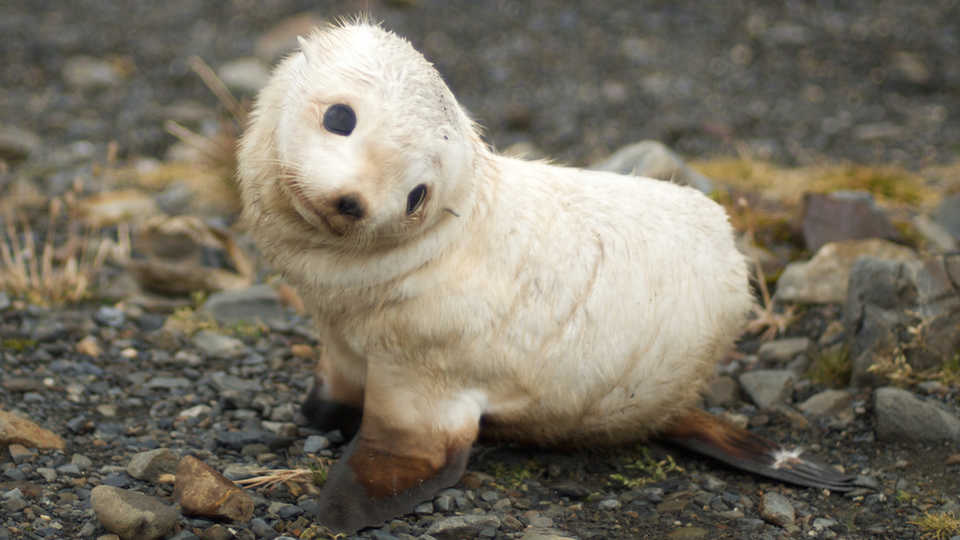Science News
Calling Your Seal Mom

Imagine trying to find your adorable seal pup among hundreds of seals on land. You can recognize your pup by smell, but to do so requires you get within 15 centimeters of it. Your eyesight is terrible and you’ve been out foraging for several days. You’re tired, your pup is hungry, and the other adult female seals are territorial and aggressive.
So Antarctic fur seals, Arctocephalus gazella, rely on vocal calls to reconnect with their pups. (Much like some human moms rely on cell phone calls to track their young.) But not just any vocal calls—the seal mothers use a combination of both amplitude and frequency modulation (think AM and FM radio) to call to and identify their pups, according to a study published this week in PLoS ONE.
The seals breed in dense colonies on shore, and during a four-month lactation period, mothers alternate foraging trips at sea (they’re gone for four to seven days) with suckling periods (one to three days) ashore. Each time the mothers return to the colony, they and their pups initially use vocalizations to find each other among several hundred other seals, and then use their sense of smell to confirm. Recognizing vocal calls is essential to pup survival, so the study’s authors investigated the components of the individual vocal signature detected by pups to identify their mothers. They carried out playback experiments on about 30 wild pups using synthetic signals played at varying distances at the Kerguelen Archipelago in the southern Indian Ocean.
This specific habitat has 750 pairs of seal moms and their pups, so getting the identities correct can be a challenge—there's a lot of background noise. The team discovered that the AM and FM combination seems to do the trick. Playbacks at different distances showed that frequency modulations propagated reliably up to 64 meters, whereas amplitude modulations were highly degraded for distances over eight meters. The scientists suggest that this is a two-step identification process: at long range, pups identified first the frequency modulation pattern of their mother's calls; other components of the vocal signature were identified at closer range.
While frequency modulation is used by other colonial species such as penguins, gulls, and other seals, the amplitude modulations and combination of the two appear to be employed by the fur seals alone. In such a large colony, this technique is “essential in individual recognition,” the team writes. A good thing for the seal pups that they can learn to stand out in the crowd!
Image: PD Tillman, Wikipedia